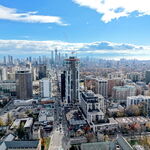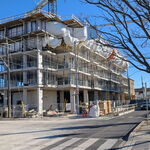Yes pardon my mistake, I meant that it doesn't touch the core at all, despite it being fairly close (as in 5-10 min drive/bus ride), to BCC. As for the underutilization, its more apparent with the train service they get. I get that the local Brampton Transit has more control over downtown Brampton and Mount Pleasant terminals, but Bramalea also has a mix of GO buses and trains that are among the most frequent across the entire network. If there were more GO buses heading to these 2 stations it wouldn't be as empty as they usually are throughout the day in terms of the service that GO provides. During the off peak hours, there are usually more people getting on from Bramalea onwards in comparison to the other 2, although that has slightly changed within the past year, but the trains would still be nearly empty until getting closer to Toronto. Mount Pleasant is more surrounded with the city suburb aspect compared to Bramalea's industrial setting and would probably stay ahead of it no matter how much growth the latter gets.




